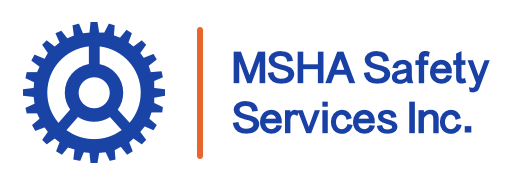Workplace safety is essential for protecting employees and fostering productivity. The value of industrial hygiene in hazard identification lies in its proactive approach to identifying and mitigating risks, ensuring a safe and healthy environment for workers. This blog delves into the critical role of industrial hygiene in safeguarding workplaces and explores its principles, tools, and future developments.
Understanding Industrial Hygiene and Its Role in Workplace Safety
Industrial hygiene focuses on protecting workers from potential health hazards in their work environment. It encompasses the anticipation, recognition, evaluation, and control of workplace factors that may cause illness or discomfort. From chemical exposure to physical hazards like noise and heat, industrial hygiene is a cornerstone of modern workplace safety.
By addressing these risks early, businesses can prevent accidents, reduce absenteeism, and improve overall productivity. At its core, industrial hygiene prioritizes both employee well-being and organizational success.
How Does Industrial Hygiene Contribute to Worker Health and Safety in Hazardous Environments?
In hazardous environments, industrial hygiene is vital. Industrial hygienists assess risks and implement control measures to mitigate hazards. For instance:
- In manufacturing, they monitor exposure to toxic substances like solvents or dust.
- In construction, they address noise levels and physical risks.
- In mining, they focus on air quality and reducing exposure to harmful gases.
By actively managing these factors, industrial hygiene ensures that workers remain healthy and safe, even in high-risk industries.
The Connection Between Industrial Hygiene and Occupational Health
Occupational health and industrial hygiene are deeply interconnected. While occupational health focuses on diagnosing and treating work-related illnesses, industrial hygiene takes a preventive approach. Both aim to protect workers, but industrial hygiene emphasizes identifying hazards before they cause harm.
For example, by using air quality monitoring to detect harmful levels of silica dust, industrial hygienists can prevent long-term illnesses like silicosis, reducing the need for medical intervention.
What Are the Key Principles of Industrial Hygiene in Relation to Hazard Identification?
The principles of industrial hygiene revolve around four main steps:
- Anticipation: Identifying potential hazards before they occur.
- Recognition: Understanding and documenting existing hazards.
- Evaluation: Measuring the extent of exposure to risks.
- Control: Implementing measures to eliminate or mitigate hazards.
These principles ensure that workplaces remain proactive in maintaining safety standards and addressing risks effectively.
Tools and Methods Used in Hazard Identification
Industrial hygienists use a variety of tools and methods to identify hazards, including:
- Air sampling devices to detect contaminants in the air.
- Noise dosimeters to measure sound levels.
- Heat stress monitors to assess temperature-related risks.
- Direct observation and worker interviews to identify ergonomic issues.
These tools provide valuable data, enabling businesses to make informed decisions about workplace safety measures.
Best Practices in Industrial Hygiene for Hazard Identification
To maximize the effectiveness of industrial hygiene in hazard identification, businesses should follow these best practices:
- Conduct regular workplace assessments and audits.
- Engage employees in identifying and reporting potential risks.
- Maintain accurate records of exposure levels and incidents.
- Continuously train workers and supervisors on safety protocols.
- Stay updated on the latest industry standards and technologies.
These practices create a culture of safety and accountability, reducing risks across all levels of an organization.
Preventing Illnesses and Injuries Through Effective Hazard Identification
The ultimate goal of hazard identification is to prevent work-related illnesses and injuries. For example:
- Monitoring air quality in factories can prevent respiratory illnesses.
- Using ergonomic assessments in offices reduces repetitive strain injuries.
- Addressing noise levels in construction sites minimizes hearing loss.
By identifying and mitigating these risks early, businesses protect their employees and reduce costly downtime.
The Legal and Regulatory Importance of Hazard Identification in Industrial Hygiene
Hazard identification is not just a safety measure—it’s also a legal requirement. Regulatory bodies like OSHA (Occupational Safety and Health Administration) and MSHA (Mine Safety and Health Administration) set standards to ensure workplace safety.
Failure to comply with these regulations can result in:
- Hefty fines and legal action.
- Damage to the company’s reputation.
- Increased employee turnover due to unsafe conditions.
By adhering to regulatory standards, businesses demonstrate their commitment to worker safety and compliance.
The Value of Industrial Hygiene in Preventing Health Risks
The proactive nature of industrial hygiene saves lives and reduces costs. By preventing illnesses and injuries, businesses experience:
- Increased productivity.
- Reduced insurance premiums.
- Enhanced employee morale and retention.
Investing in hazard identification is not only a moral obligation but also a smart business decision.
The Future of Industrial Hygiene: Emerging Risks and Technologies
As industries evolve, so do the risks. Emerging challenges include:
- Managing hazards in remote or hybrid work environments.
- Addressing new risks from advanced manufacturing processes.
Innovative technologies like AI-driven analytics, wearable safety devices, and automated hazard detection are shaping the future of industrial hygiene. These advancements promise even safer workplaces and more efficient risk management.
The Critical Role of Industrial Hygiene in Ensuring a Safe and Healthy Workplace
Industrial hygiene is an essential part of modern workplace safety. By prioritizing hazard identification and control, businesses protect their employees, comply with regulations, and create a culture of safety. The value of industrial hygiene lies not only in preventing risks but also in fostering a productive and thriving workforce.

